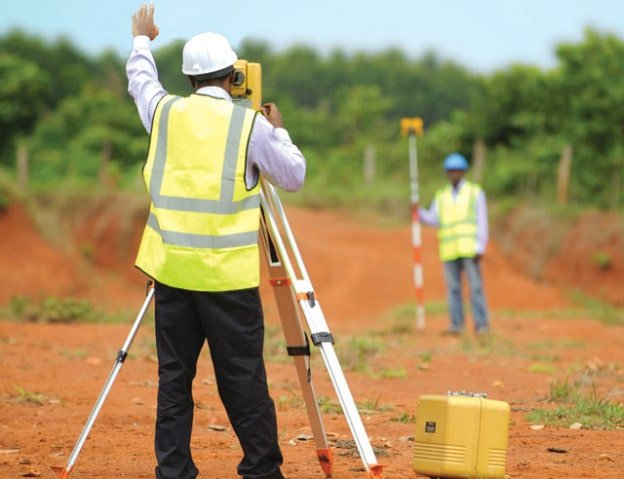Surveys form an integral part of different fields such as construction and the property market. It encompasses surveying the environment to demarcate the boundaries of the land, its inclination, and the stretch. This article will provide you with a general understanding of basic surveying principles and varieties, methods, and applications of surveying. Before completing this lesson, you will be able to define what surveying is and why surveying is conducted in various projects throughout the world.
What is Basic Surveying?
Basic surveying is the elementary method used in staking out and planimetry of a piece of ground. It refers to a process whereby one finds out the positions of points on the Earth’s surface about each other. This may be essential in surveying as well as mapping, designing a construction site, and most importantly, managing our natural resources.
Basic surveying may be defined as the most fundamental process of data collection to facilitate planning and design, and the following are the key objectives of basic surveying:
Boundary Determination: Surveying with a view of establishing and determining a particular area or boundary of a property of an area of land.
Topographic Mapping: preparing maps that depict various characteristics of the ground, such as contours.
Construction Planning: Correct positioning of buildings and structures so that all their features will be properly placed in correct relation to one another.
Land Development: Aiding and enabling the process of parceling and administering the geographical space with different kinds of property.
Simple Equipment Used in General Surveying.
Many methods are used by surveyors to make sure they gather accurate information.
Here are some of the most common tools and their uses:
Theodolite
Purpose: Find the degrees in both the horizontal and vertical plane.
Use: Quite vital for determination of angles, which is always very important when determining positions using triangulation.
Total Station
Purpose: An instrument that merges theodolite with an electronic distance-measuring instrument.
Use: Enables one to measure distance and angles and is used mostly in surveying and construction.
Level
Purpose: It measures the amount of height difference between two points.
Use: Used in the computations of the required elevation and in ascertaining the points of horizontal alignment.
Measuring Tape
Purpose: Measures distances directly.
Use: They are a popular basic tool that can provide a fast method of distance measurement used mostly for small-scale or initial measurements.
GPS Device
Purpose: It utilizes satellite signals to determine the exact locations of a given object.
Use: Supplies the right geographic information and is becoming more commonly used for numerous surveying functions.
Surveying Techniques
There are several techniques involved in surveying, all of which can be used for various functions and different kinds of surveying.
Here are some fundamental methods:
Triangulation
Description: Utilizes triangles to find distance and postures.
Method: Used to measure angles and one of the sides of the triangle and determine the rest of the side of the triangle through trigonometric calculations.
Application: Great when it comes to big surfaces that cannot be measured without special tools.
Trilateration
Description: Uses distances of related points to establish an unknown point.
Method: Determines the distances of at least three points to be used in determining the position of another point.
Application: Most commonly, it is applied in the global positioning system and the more recent surveying systems.
Leveling
Description: Used for measuring the height difference between two different points.
Method: To determine the elevation of different centers or points, he uses a leveling instrument that has a base level.
Application: Crucial to the development of construction projects and production of authentic topographic maps.
Contour Mapping
Description: Symbolizes the slopes in terrains that are usually depicted on a map.
Method: Establishes points of connection that apprehend comparable pedestals.
Application: Useful for determining the shape of the land to determine how construction should be done more effectively.
Applications of Basic Surveying
There are many sub-branches of surveying, each of them used in various disciplines and under rather different conditions. Here are some common applications:
Construction
Purpose: Make certain that construction projects such as building construction and infrastructural construction are well-sited.
Application: It encompasses the laying down of the base, the checking of the coming in of alignments, and the gradual monitoring of shifts while the construction is in progress.
Real Estate
Purpose: Defines the boundaries of property and characteristics of the same.
Application: Indispensable for purchasing and selling land or any form of real estate as well as for solving boundary issues.
Land Development
Purpose: Aids in the organization and administration of land for new ventures.
Application: It is applied in designing subdivisions, roads, and utilities to come up with good developmental plans that can easily facilitate the lives of the people.
Environmental Management
Purpose: observe the changes in the environment and escalate the utilization of natural resources.
Application: It aids in the monitoring of land use changes, measurement of erosion, as well as evaluation of the efficacy of formulated environmental policies.
Challenges in Basic Surveying
Various factors make surveying complex and, at times, very challenging. Some common challenges include:
Accuracy
Issue: However, it is possible to realize high-precision control, but it is challenging when the control is implemented over long ranges.
Solution: Applying sophisticated instruments and methods to avoid mistakes and provide correctness.
Terrain
Issue: The terrain of the earth is diverse, which is not suitable for surveying.
Solution: Using specialized tools and techniques about various terrain types in the land.
Weather Conditions
Issue: In measuring, it is also sensitive to weather conditions, which may affect measurements made.
Solution: In this case, surveys are planned during good weather, and equipment that is resistant to environmental conditions is used.
The Future of Surveying
This means surveying technology also changes; thus, we have new technologies for surveying, methods, and tools for better results. Some trends in the field include:
Digital Surveying
Description: Adopts the use of computerized gadgets and applications in data capture and analysis.
Benefit: Gains efficiency and allows for highly specific adaptability.
Drones
Description: Employment of drones that are used to capture data aerially.
Benefit: Is capable of generating high-resolution images and data for large areas within a short duration and with fewer resources.
Conclusion
Instrumentation surveying is therefore a basic practice that is necessary in the field to help several industries in measurements and mapping. It is therefore important that anyone getting into construction, real estate, land development, and environmental management grasp the concepts and practice of basic surveying. In such a center of development as Dubai, where the rate of expansion is very high and land is essential, professional surveying services are essential to ensure proper planning, as well as the implementation of the project, is done effectively. In this respect, when it comes to getting all-inclusive surveying services in dubai, expertise can be extremely decisive in offering accurate and reliable results.





